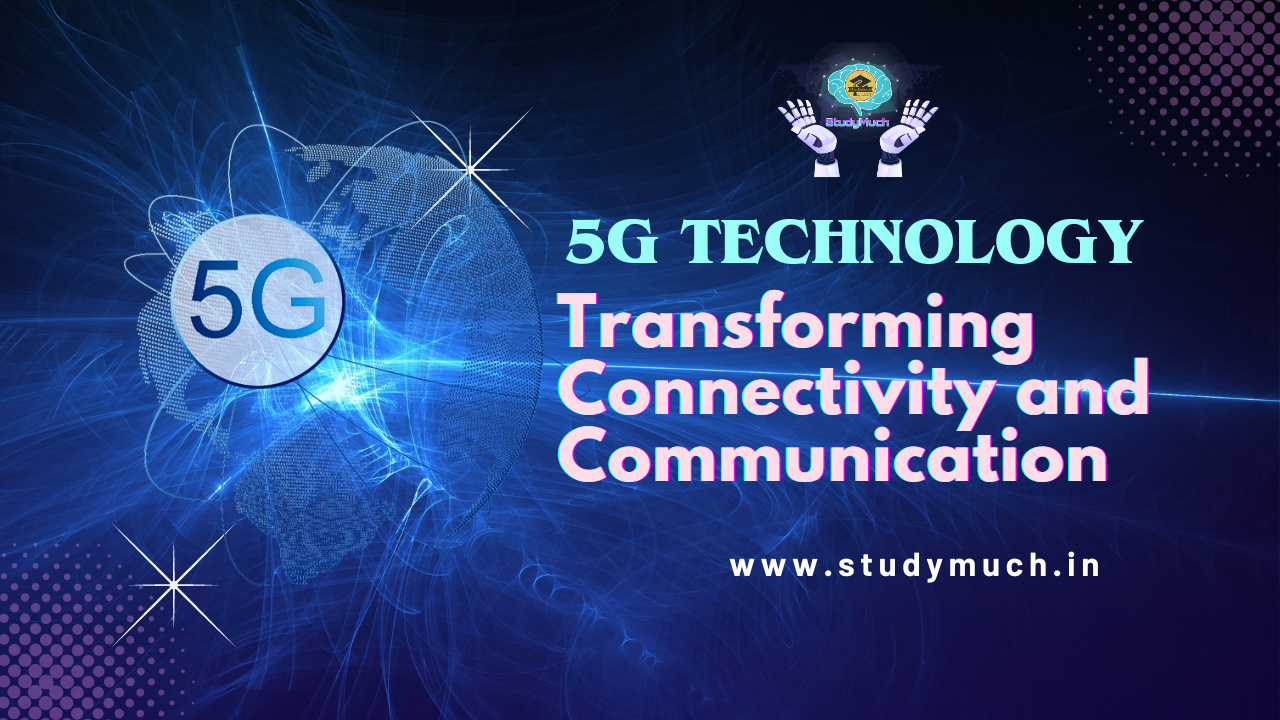5G Technology; Transforming Connectivity and Communication

5G Technology: Transforming Connectivity and Communication
In our fast-paced digital age, technology is developing at an unprecedented rate, reshaping the way we connect, communicate and experience the world around us. Amidst the revolutionary advancements, 5G technology stands out as a game-changer, which is set to transform connectivity and communication on a global scale. In this blog post, we will explore the intricacies of 5G technology, its capabilities, benefits and its transformative impact on various industries and everyday life.
Understanding 5G Technology:
5G, or fifth generation wireless technology, represents a significant leap forward from its predecessors such as 4G LTE. It promises faster speeds, lower latency, increased capacity, and the ability to connect a large number of devices simultaneously. Unlike previous generations, 5G uses a variety of frequencies, including lower frequencies for wider coverage and higher frequencies for ultra-fast data rates.

Key Features and Benefits:
- Blazing Speeds: With speeds potentially up to 100 times faster than 4G, 5G enables seamless streaming of 4K and even 8K video, high-definition virtual reality experiences and faster downloads of large files.
- Low Latency: 5G technology significantly reduces latency, the delay between sending and receiving data. This advancement is important for real-time applications such as remote surgery, autonomous vehicles and augmented reality (AR) gaming.
- Massive device connectivity: The Internet of Things (IoT) is set to flourish with 5G, as it can efficiently handle connections to a vast number of devices, from smart devices to industrial sensors, without compromising on performance.
- Enhanced Reliability: The advanced network architecture of 5G enhances reliability, making it ideal for mission-critical applications such as emergency services, industrial automation, and remote diagnostics.
- Expanded network capacity: The increased capacity of 5G networks ensures that data demand from an increasing number of users and devices can be accommodated without network congestion.
Transformational Industries:
The impact of 5G technology extends far beyond faster smartphone browsing. It is driving a wave of innovation in various sectors:
- Healthcare: Telemedicine and remote surgery have become more feasible with the low latency of 5G, enabling doctors to perform procedures with precision from a distance.
- Automotive: 5G supports vehicle-to-vehicle (V2V) and vehicle-to-infrastructure (V2I) communications, a cornerstone of autonomous driving and road safety.
- Manufacturing: The manufacturing industry benefits from advanced automation, predictive maintenance, and real-time monitoring of machinery and processes.
- Entertainment: Augmented and virtual reality experiences are more pervasive than ever before, revolutionizing entertainment, gaming and interactive media.
- Smart Cities: 5G’s ability to handle multiple IoT devices is central to the development of smart cities, with applications ranging from traffic management to waste disposal.

Challenges and Considerations:
While 5G brings remarkable potential, it also presents challenges including infrastructure deployment, spectrum allocation and security concerns. Striking a balance between innovation and addressing these challenges is critical to a successful 5G rollout.
Conclusion:
5G technology represents a giant leap forward in connectivity and communications, promising to reshape industries, enable new innovations and enhance everyday experiences. As 5G networks continue to expand globally, we can look forward to a future where unprecedented levels of connectivity and transformative technologies will become the norm, fueling progress and improving lives in ways we can only imagine. can start doing.
Also Learn;



1 Comment
smorter giremal · November 4, 2024 at 2:05 am
Greetings! Very helpful advice on this article! It is the little changes that make the biggest changes. Thanks a lot for sharing!